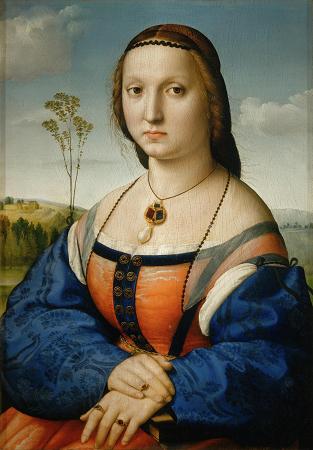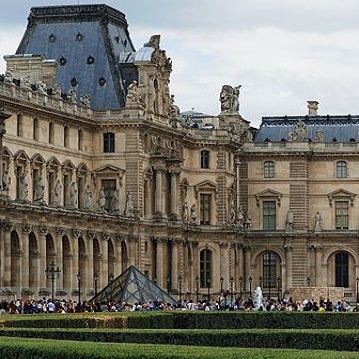Mona Lisa (c1505). Oil on panel. 77 x 53. The Mona Lisa is a half-length portrait painting by the Italian Renaissance artist Leonardo da Vinci that has been described as the best known, the most visited, the most written about, the most sung about, the most parodied work of art in the world. The Mona Lisa is also one of the most valuable paintings in the world. It holds the Guinness World Record for the highest known insurance valuation in history at US$100 million in 1962. The painting is thought by many to be a portrait of Lisa Gherardini, the wife of Francesco del Giocondo, and is in oil on a white Lombardy poplar panel. It had been believed to have been painted between 1503 and 1506; however, Leonardo may have continued working on it as late as 1517. Recent academic work suggests that it would not have been started before 1513. It was acquired by King Francis I of France and is now the property of the French Republic, on permanent display at the Louvre Museum in Paris since 1797. The subject's expression, which is frequently described as enigmatic, the monumentality of the composition, the subtle modelling of forms, and the atmospheric illusionism are novel qualities that have contributed to the continuing fascination and study of the work. The title of the painting, which is known in English as Mona Lisa, comes from a description by Renaissance art historian Giorgio Vasari, who wrote Leonardo undertook to paint, for Francesco del Giocondo, the portrait of Mona Lisa, his wife. Mona in Italian is a polite form of address originating as ma donna-similar to Ma'am, Madam, or my lady in English. This became madonna, and its contraction mona. The title of the painting, though traditionally spelled Mona, is also commonly spelled in modern Italian as Monna Lisa, but this is rare in English. Vasari's account of the Mona Lisa comes from his biography of Leonardo published in 1550, 31 years after the artist's death. It has long been the best-known source of information on the provenance of the work and identity of the sitter. Leonardo's assistant Salai, at his death in 1524, owned a portrait which in his personal papers was named la Gioconda, a painting bequeathed to him by Leonardo. That Leonardo painted such a work, and its date, were confirmed in 2005 when a scholar at Heidelberg University discovered a marginal note in a 1477 printing of a volume by ancient Roman philosopher Cicero. Dated October 1503, the note was written by Leonardo's contemporary Agostino Vespucci. This note likens Leonardo to renowned Greek painter Apelles, who is mentioned in the text, and states that Leonardo was at that time working on a painting of Lisa del Giocondo. In response to the announcement of the discovery of this document, Vincent Delieuvin, the Louvre representative, stated Leonardo da Vinci was painting, in 1503, the portrait of a Florentine lady by the name of Lisa del Giocondo.
more...






